Ryan Hall's Blog, page 366
August 17, 2015
Making the Leap with Star Steeplechaser Emma Coburn
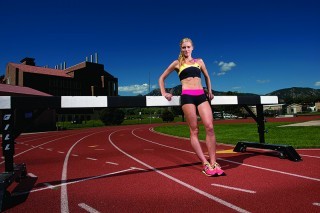
Coburn has won four U.S. titles in the steeplechase since 2011 and owns the fastest time ever run by an American woman in the event. Photo: David Clifford
Emma Coburn is one of America’s best chances for a distance-running medal heading into this month’s IAAF World Championships in China. The front-running Coloradan takes us inside the steeplechase—the original obstacle course race—to see what makes it so difficult, dangerous and fascinating.
Let’s get this straight from the start: The 3,000-meter steeplechase is by far the most peculiar—if not the most difficult—distance running races out there.
The “steeple” is a savage compromise of strength, speed and endurance, and it entails running nearly 2 miles at a crazy-fast pace (about 4:50-mile pace for women, 4:20 for men) while negotiating 35 barriers—seven of them in front of a daunting water pit—in what might best resemble a sadistic equestrian event.
The steeplechase barriers are not the lightweight aluminum hurdles set up by school kid volunteers that tip over when you brush your knee against them. A 30-inch high, black-and-white-striped steeplechase barrier is an unmoving, 13-foot-wide, 220-pound mammoth of an obstacle. Clip a toe and you kiss the track. Hit your shin and you’re scarred for life. Or you end up submerged in the water pit to the cheers of bloodthirsty fans who crowd at the edge of the pit, smartphones poised, praying for YouTube-worthy carnage. Competitors have scars on their inner thighs from where the underside of a track spike sunk into their flesh during a group hurdle.
There’s a unique pain in watching an amateur steepler drag herself through the course, looking more ragged with each lap and more afraid as she steps on the water jump barrier. The pros aren’t exempt, either. At the 2012 London Olympics, Birhan Getahun of Ethiopia slammed into the final hurdle and exited the track in a wheelchair. A wrong step has sent thousands of athletes head first into water pits, most recently in the prelims of the 2015 U.S. track championships in Eugene, Ore., in June.
The 3,000-meter steeplechase is the track and field equivalent of a Benny Hill chase scene.
Why would anyone want to run the steeplechase? A runner would have to be crazy, masochistic or just a genuine badass to willingly submit to that event. Emma Coburn, who became the fastest American steeplechaser in history last summer, one of the U.S.’s great hopes for Olympic glory and the woman who will push the boundaries of what’s possible, is definitely the latter. And it just so happens that Coburn, 24, thinks obstacles are fun, too.
While men have been competing in the event since 1896, the steeplechase didn’t debut in the women’s NCAA national championship until 2001 and the Olympics until 2008. At first, college coaches weren’t willing to sacrifice their fastest runners to the obstacle course, and it became a dumping ground for athletes who couldn’t keep up in the ultra-competitive 1,500 meters or handle the sustained grind of the 5,000. The rationale was, maybe these athletes will be more competitive if we make them jump over stuff, too.
Then women hit their stride and the steeplechase became competitive. Seven years ago, Jenny Simpson (née Barringer) blazed a new American record in 9:22.73 as a junior at the University of Colorado, breaking it the next year with a 9:12.50 in Berlin.Coburn, then an 18-year-old sophomore and fellow Buffalo, was paying attention.
The native Coloradan grew up in Crested Butte, a mountain town at the end of a highway where a four-season high school athlete (cross country, volleyball, ice hockey, track) complemented school sports with downhill skiing, kayaking, mountain biking and hiking in her downtime. Outmaneuvering people comes second nature to mountain kids, and Coburn’s role as outside hitter in volleyball and leaper-of-jump-balls in basketball meant the girl had ups.
In 2007, the high school junior stepped into her first 2,000m steeplechase in Albuquerque, N.M. Coburn and her family had driven five hours for her to run the 800 meters, and they figured she might as well do something on Day 2. Her race form may not have been pretty, but Coburn, born scrambling up mountainsides, gleefully tackled the hurdles and water jump.
“Every lap, I had something to look forward to,” says Coburn, sitting at Pekoe Sip House in Boulder, picking at a pastry as her 2-year-old rescue mutt, Arthur, looks upward from beneath the table. “It was a challenge that gave me something to focus on other than the misery of running lap after lap. I liked the adventure of it.”
She qualified for the national championships and soon after got a recruiting call from Heather Burroughs, assistant coach to CU head coach and Olympic coach Mark Wetmore.
“When I was in high school, I wasn’t looking at high school or college times, I didn’t care about the professionals or dream about the Olympics,” says Coburn, who now surrounds herself with Olympic training partners and distance running royalty Kara Goucher, Jenny Simpson and Shalaya Kipp. “When Heather made the recruiting call the summer after my junior year, I may have been a little too honest. I told her I wasn’t sure I wanted to run in college.”
Then Coburn stepped on the track at the 2008 Nike Outdoor Nationals and placed second. And for the first time, Coburn contemplated the possibilities of a future in running—and the mistake of telling the coach at her first-pick school that she wasn’t sure she wanted one.
RELATED: Video: Emma Coburn Talks Steeplechase
The post Making the Leap with Star Steeplechaser Emma Coburn appeared first on Competitor.com.
Race-winning nutrition from the Western States 100
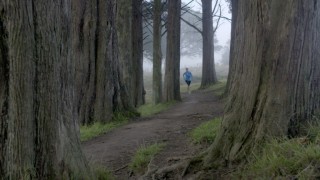
GUtv
Episode two of GU TV features pro cyclist Yuri Hauswald, winner of the 2015 Dirty Kanza 200 gravel-cycling race, interviewing running champ and 2015 Western States 100 race winner Magdalena Lewy-Boulet about the nutrition plans they each used to win their respective races.
We caught up with Magdalena Boulet, winner of the 2015 Western States 100 Endurance Run for additional insights on race-day nutrition. Here’s what she had to say:
Could you describe the breakfast you ate before your successful WS100 day?
Three hours before the race, I ate a small bowl of cooked quinoa with almond butter, salt, and honey and drank a cup of strong coffee. Two hours before the race, I ate two pieces of toast with almond butter and jam. One hour before, I had 16 ounces of hot Lemon Tea GU Brew. Then, five minutes before the start of the race, I had a GU Chocolate Sea Salt Roctane Gel.
Did you test the all-liquid strategy before the race to make sure it would work for you? How? Would you use this strategy again?
My all-liquid fueling strategy at WS100 was very strategic and race specific. The hot conditions at WS100 motivated me to plan my nutritional strategies in order to help me perform as well as possible in a hot environment. I had the opportunity to practice this strategy at the Sean O’Brien 100k and the Canyons 100k races prior to WS. Carbohydrate requirements are increased in the heat, due to a shift in substrate utilization towards carbohydrate oxidation. Proper hydration during hot conditions can enhance performance, avoid thermal stress, maintain plasma volume, and delay fatigue. Overdrinking before, during, and after endurance events may cause sodium depletion and may lead to hyponatremia. The key for me was Roctane Drink, a blend of carbohydrates, electrolytes and amino acids, which I consumed in small but frequent intervals.
In the video, you mentioned consuming “branched-chain amino” acids in your bottle. Why are these important?
Branched chain amino acids are key players in the athlete’s arsenal to maximize performance, recovery, and adaptations to training. When consumed during exercise, BCAAs help reduce central fatigue and decrease soreness. When consumed after both resistance and endurance exercise, they increase muscle protein synthesis rates, decrease degradation, and promote muscle protein accretion and recovery.
The post Race-winning nutrition from the Western States 100 appeared first on Competitor.com.
Race-Day Nutrition Planning

GUtv
Episode two of GU TV features pro cyclist Yuri Hauswald, winner of the 2015 Dirty Kanza 200 gravel-cycling race, interviewing running champ and 2015 Western States 100 race winner Magdalena Lewy-Boulet about the nutrition plans they each used to win their respective races.
The post Race-Day Nutrition Planning appeared first on Competitor.com.
Photos: 2015 America’s Finest City Half Marathon
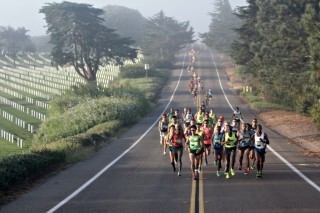
One of San Diego’s most popular half marathons, the America’s Finest City Half Marathon took place on Sunday under hot conditions in Southern California. The race is a scenic point-to-point half that starts at Cabrillo National Monument in Point Loma and finishes in Balboa Park, giving runners an up-close view of some of San Diego’s favorite sights.
Sunday’s race was won by Kevin Kochei of Kenya in 1:04:19. Fernando Cabada was the top American male, finishing fourth in 1:04:53. American Janet Cherobon-Bawcom won the women’s race in 1:12:24.
Here are photos from the action, taken by Bob Betancourt and Patrice Malloy:
Photo Gallery
1 of {count}
Back to Start
View Larger Image

America's Finest City Half Marathon
At the start, overlooking the Pacific Ocean at Cabrillo National Monument. Photo: Patrice Malloy.
View Larger Image
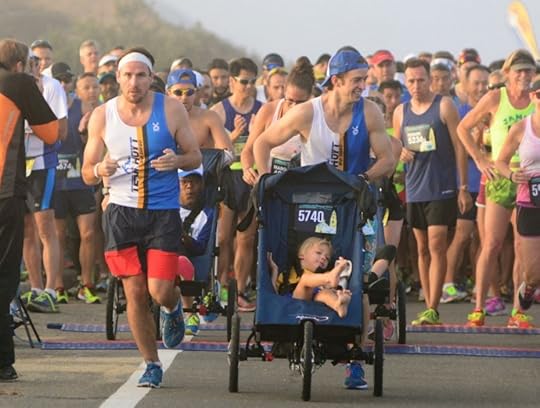
America's Finest City Half Marathon
Photo: Bob Betancourt
View Larger Image
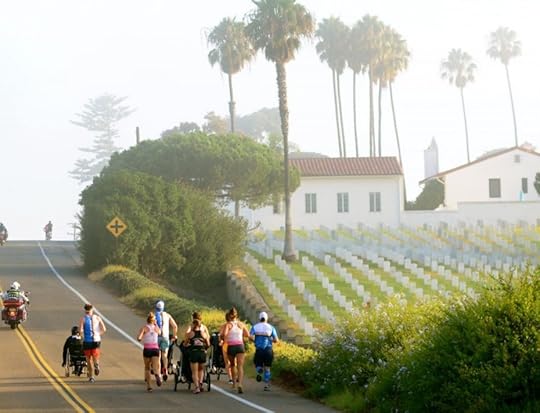
America's Finest City Half Marathon
Photo: Bob Betancourt
View Larger Image

America's Finest City Half Marathon
Photo: Bob Betancourt
View Larger Image
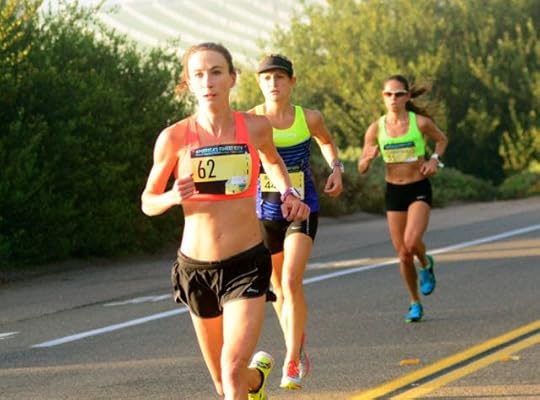
America's Finest City Half Marathon
Photo: Bob Betancourt
View Larger Image
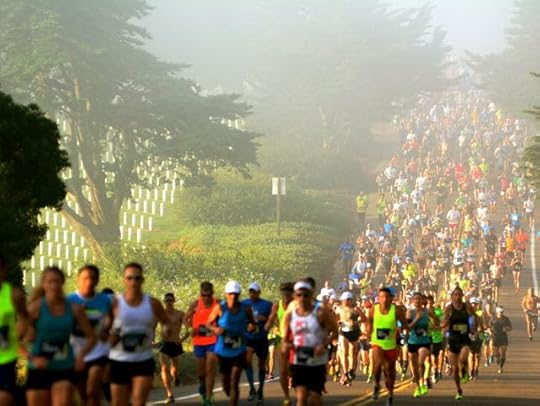
America's Finest City Half Marathon
Photo: Bob Betancourt
View Larger Image

America's Finest City Half Marathon
Photo: Bob Betancourt
View Larger Image

America's Finest City Half Marathon
Photo: Patrice Malloy
View Larger Image

America's Finest City Half Marathon
Photo: Bob Betancourt
View Larger Image

America's Finest City Half Marathon
Photo: Bob Betancourt
View Larger Image
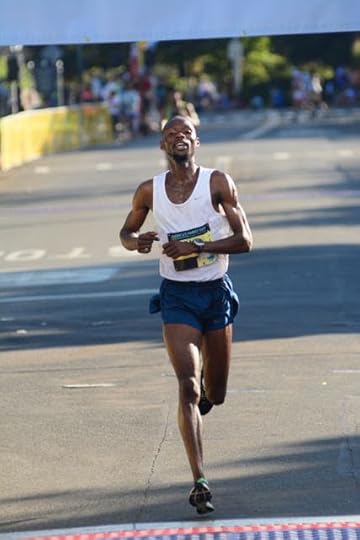
America's Finest City Half Marathon
Photo: Bob Betancourt
View Larger Image
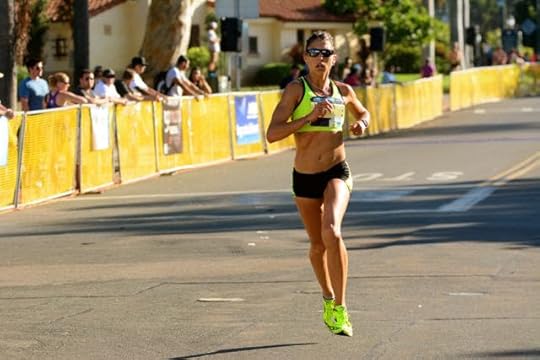
America's Finest City Half Marathon
Photo: Bob Betancourt
View Larger Image

America's Finest City Half Marathon
Photo: Bob Betancourt
View Larger Image

America's Finest City Half Marathon
Photo: Bob Betancourt
View Larger Image
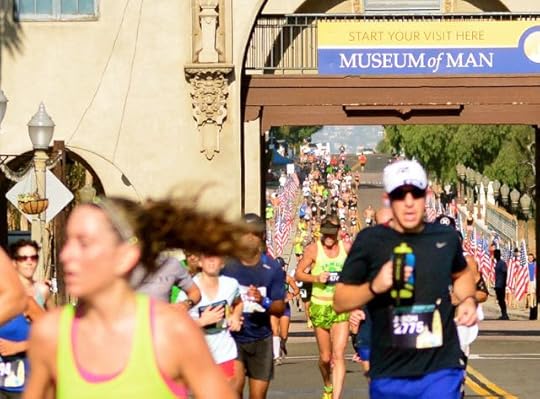
America's Finest City Half Marathon
Photo: Bob Betancourt
View Larger Image

America's Finest City Half Marathon
Photo: Bob Betancourt
View Larger Image
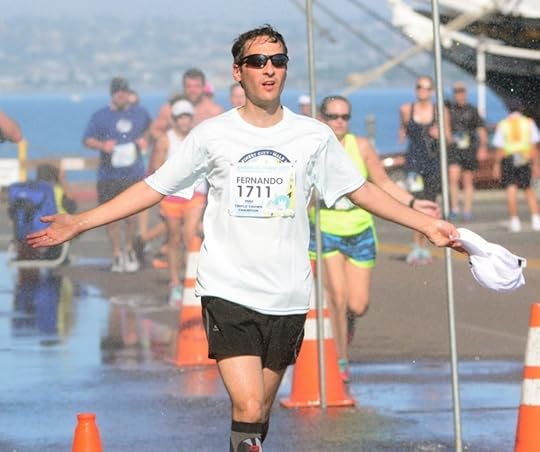
America's Finest City Half Marathon
Photo: Bob Betancourt
View Larger Image

America's Finest City Half Marathon
Photo: Bob Betancourt
View Larger Image
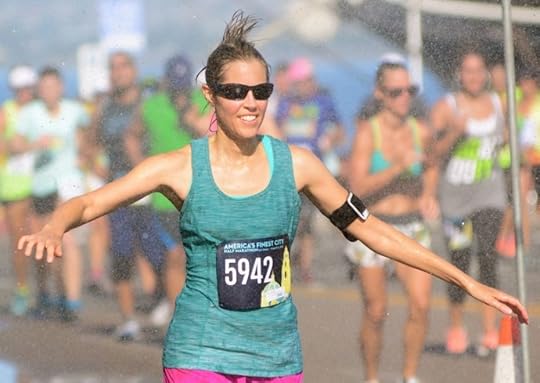
America's Finest City Half Marathon
Photo: Bob Betancourt
View Larger Image
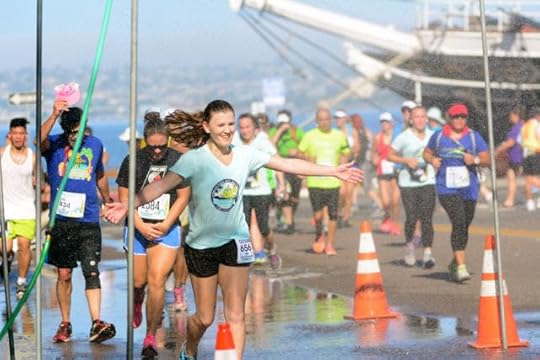
America's Finest City Half Marathon
Photo: Bob Betancourt
View Larger Image

America's Finest City Half Marathon
Kevin Kochei of Kenya won the men's race and the $2,000 first prize. Photo: Bob Betancourt
View Larger Image
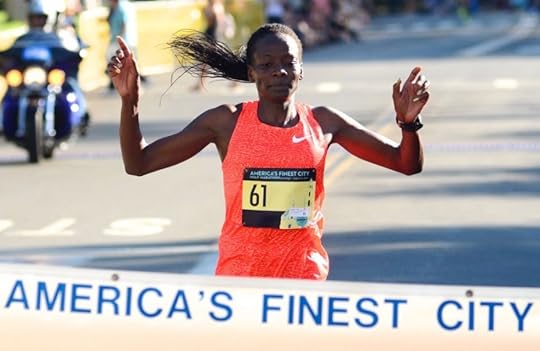
America's Finest City Half Marathon
Janet Cherobon-Bawcom, winner of the women's race. Photo: Bob Betancourt
View Larger Image
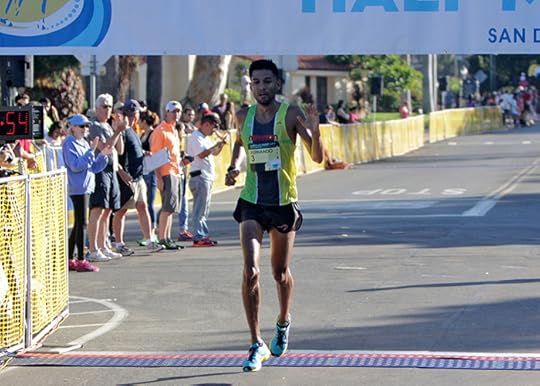
America's Finest City Half Marathon
Fernando Cabada finished fourth. Photo: Patrice Malloy
View Larger Image

America's Finest City Half Marathon
Photo: Patrice Malloy
View Larger Image

America's Finest City Half Marathon
Photo: Patrice Malloy
Related Galleries
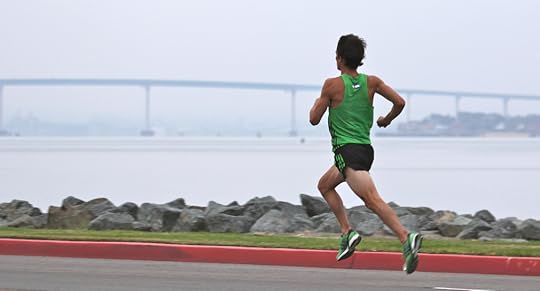
America’s Finest City Half Marathon & AFC 5K

More Galleries
The post Photos: 2015 America’s Finest City Half Marathon appeared first on Competitor.com.
2012 Olympic 1,500m Gold Medalist Busted For Doping
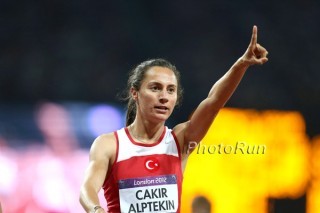
Turkey's Asli Cakir-Alptekin will serve an 8-year ban for doping. Photo: PhotoRun.net
Piggybacking on last week’s announcement that world and Olympic silver medalist Elvan Abeylegesse of Turkey tested positive for performance-enhancing drugs in a reanalysis of samples from the 2007 world championships, it was announced on Monday that her countrywoman, Asli Cakir-Alptekin, who won gold in the 1,500m at the 2012 Olympic Games in London, has been stripped of her Olympic title and will serve an 8-year ban for blood doping.
“Ms Cakir-Alptekin is found to have committed a second anti-doping rule violation, after a first one committed in 2004, and shall serve a period of ineligibility of eight years, to expire at midnight on 9 January 2021,” the report, which was issued by the Court of Arbitration for Sport, states. “Furthermore, all competitive results obtained by the athlete from 29 July 2010 onwards are disqualified, and all related titles, awards, medals, points and appearance money are forfeited. This includes in particular the Olympic gold medal won in London in 2012 and the gold medal won at the European Championships in the same year.”
RELATED: Olympic 1500m Champ Fails Doping Test
Caki-Alptekin, who was investigated by the International Association of Athletics Federations (IAAF) based on abnormal blood values in her biological passport, has not competed since January 2013. Given Cakir-Alptekin’s suspension, London silver medalist Gamze Bulut of Turkey will be upgraded to gold with Maryam Jamal of Bahrain sliding into the silver slot and Tatyana Tomashova of Russia making her way onto the podium to claim bronze. Here’s where things get interesting: Bulut, who has never failed a drug test, chopped 17 seconds off her 1,500m personal best from 2011 to 2012, clocking a 4:01.18 in the 2012 Olympic semifinal—a performance which began raising suspicions around her rapid improvement. Tomashova, the 2004 Olympic silver medalist, served a 2-year doping suspension in late 2006—along with six other Russian athletes—for manipulating drug samples.
RELATED: Goucher, Flanagan Likely To Get Medal Upgrades
The full decision against Cakir-Alptekin, including all her suspended results and forfeiture of prize money, can be read here on the Court of Arbitration For Sport’s website.
The post 2012 Olympic 1,500m Gold Medalist Busted For Doping appeared first on Competitor.com.
Photos: 2015 Falmouth Road Race
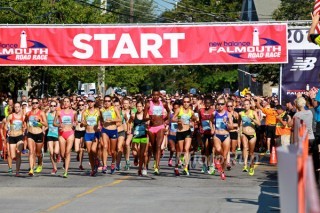
One of the most famous road races in the United States, the Falmouth Road Race took place on Sunday in Massachusetts in hot conditions. The 7-mile race had nearly 11,000 finishers, including the women’s overall winner, Diane Nukuri of Burundi, and the men’s winner Stephen Sambu of Kenya.
RELATED: Falmouth Road Race Highlighted By Thrilling Finish
Here are some photos of the elite runners in action—a field that included top Americans like Meb Keflezighi, Sara Hall, Amy Cragg, Chris Derrick and more. All photos courtesy of PhotoRun.net:
Photo Gallery
1 of {count}
Back to Start
View Larger Image

2015 Falmouth Road Race
The start of the women's race. Photo: PhotoRun.net
View Larger Image
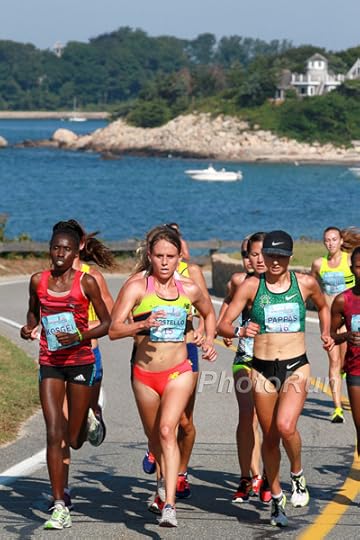
2015 Falmouth Road Race
A pack of runners early on, including Alexi Pappas and Liz Costello. Photo: PhotoRun.net
View Larger Image

2015 Falmouth Road Race
Amy Cragg finished fifth in a time of 37:53. Photo: PhotoRun.net
View Larger Image

2015 Falmouth Road Race
Sara Hall finished second in a time of 37:10, and was the top American female.
View Larger Image

2015 Falmouth Road Race
Sentayehu Ejigu of Ethiopia finished third in 37:26.
View Larger Image

2015 Falmouth Road Race
Neely Spence Gracey finished fourth in 37:32, the second American. Photo: PhotoRun.net
View Larger Image

Nukuri_DianeLeds-Falmouth15
Diane Nukuri of Burundi pulled away from the lead pack. Photo: PhotoRun.net
View Larger Image
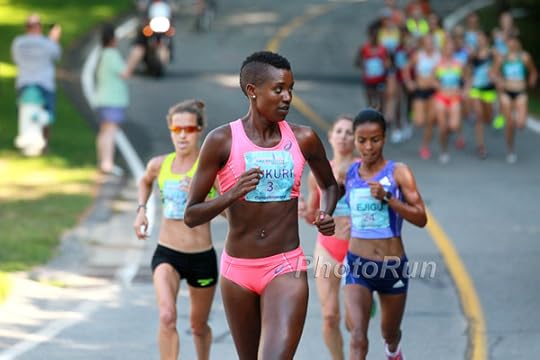
2015 Falmouth Road Race
The hot day took a toll on Nukuri, who frequently checked the runners behind her. Photo: PhotoRun.net
View Larger Image

2015 Falmouth Road Race
Alexi Pappas finished seventh in 38:16.
View Larger Image
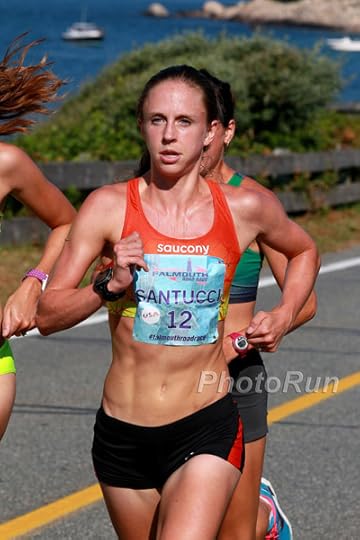
2015 Falmouth Road Race
Clara Santucci finished 14th in 39:47.
View Larger Image
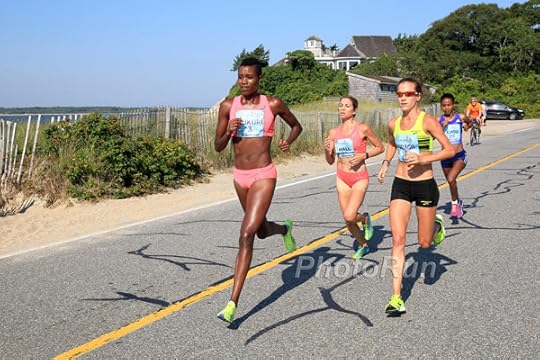
2015 Falmouth Road Race
Diane Nukuri pulled away from Sara Hall and the rest of the leaders and won in 36:47—a 23-second victory over Hall.
View Larger Image
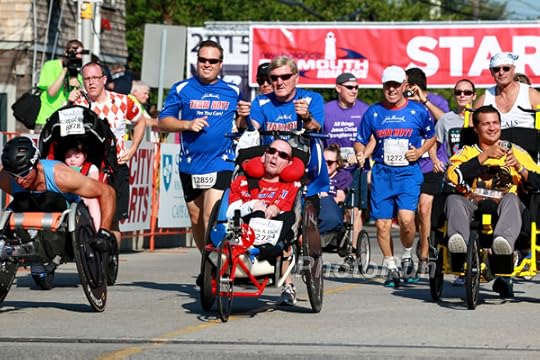
2015 Falmouth Road Race
The Hoyts took part in Sunday's race.
View Larger Image

2015 Falmouth Road Race
The men's leaders early on.
View Larger Image
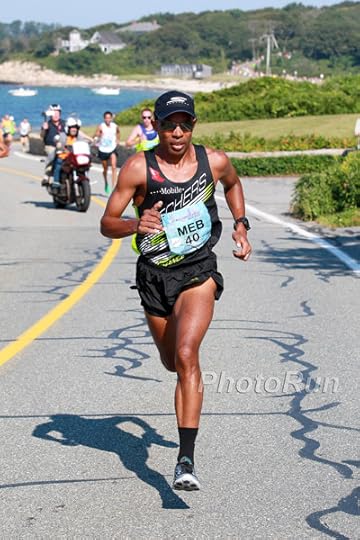
2015 Falmouth Road Race
Meb Keflezighi, who had a slight hamstring strain, was still the top masters runner in the field, finishing 10th in 34:01.
View Larger Image

2015 Falmouth Road Race
Abdi Abdirahman was with the lead group, but dropped out with a muscle cramp.
View Larger Image

2015 Falmouth Road Race
Aaron Braun finished seventh in 33:15.
View Larger Image

2015 Falmouth Road Race
Sam Chelanga, who recently became an American citizen, finished fourth in 32:21 and was the top American in the field.
View Larger Image

2015 Falmouth Road Race
Andrew Colley ran 33:53 to finish ninth.
View Larger Image

2015 Falmouth Road Race
Chris Derrick finished eighth in 33:41.
View Larger Image

2015 Falmouth Road Race
Meb Keflezighi.
View Larger Image

2015 Falmouth Road Race
Leonard Korir of Kenya finished third in 32:20.
View Larger Image
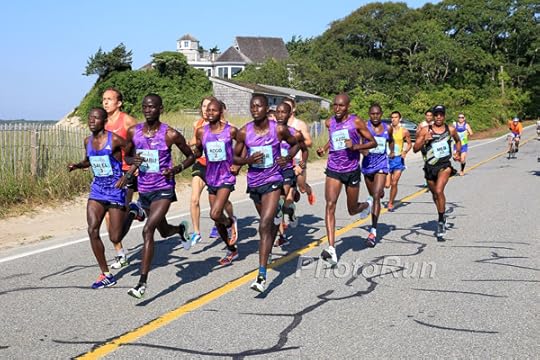
2015 Falmouth Road Race
The lead pack in the men's race.
View Larger Image

Sambu_Stephen1d-Falmouth15
Stephen Sambu was the big winner, finishing first in 32:17 and also winning the "Countdown Clock" competition over Diane Nukuri.
Related Galleries
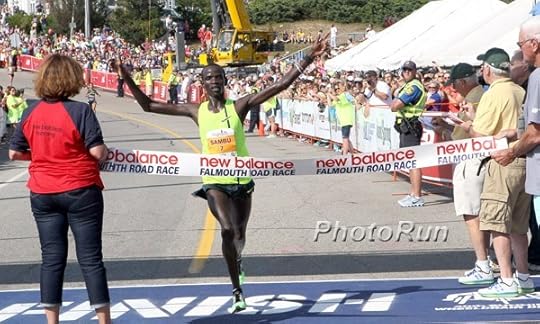
Photos: 2014 Falmouth Road Race

More Galleries
The post Photos: 2015 Falmouth Road Race appeared first on Competitor.com.
Photos: O2X Summit Challenges in Colorado
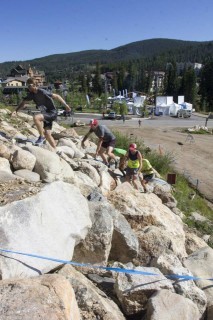
The first O2X Summit Challenges event was held Aug. 15 at Winter Park Resort in Colorado. More than 160 competitors raced 4 miles over natural terrain challenges on the way to the summit finish line at 11,230 feet.
RELATED: The Grueling Fun of Off-Trail Racing
Photo Gallery
1 of {count}
Back to Start
View Larger Image
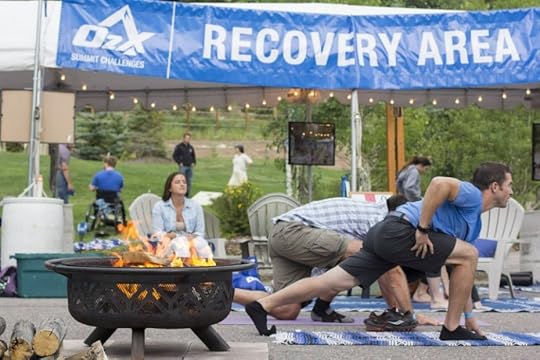
View Larger Image
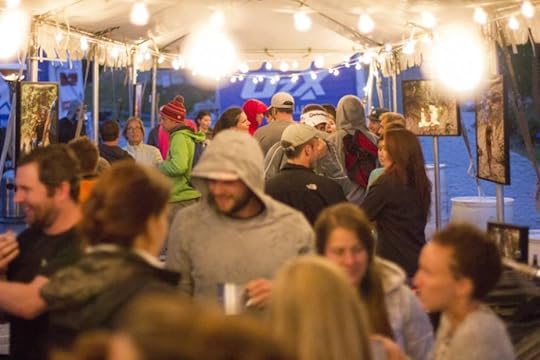
View Larger Image
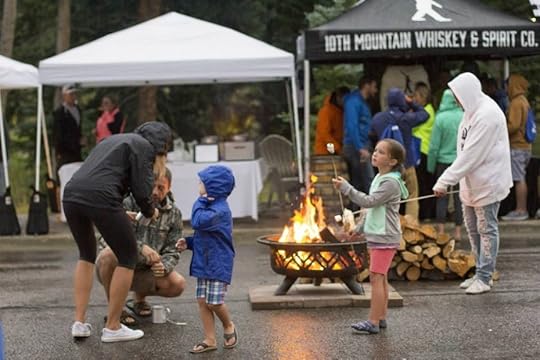
View Larger Image

View Larger Image
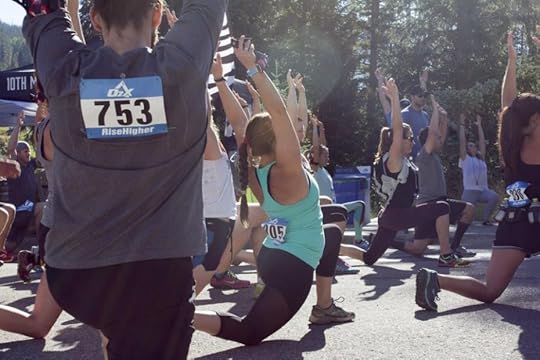
View Larger Image

View Larger Image

View Larger Image
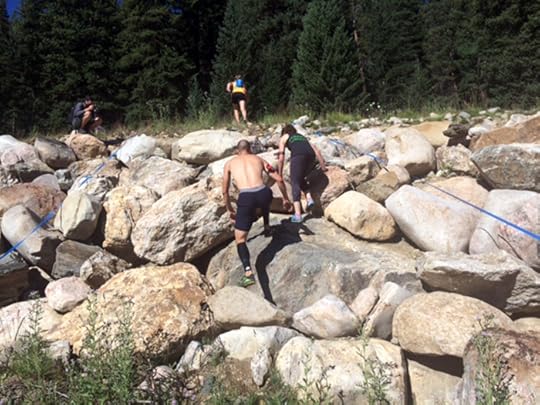
View Larger Image

View Larger Image
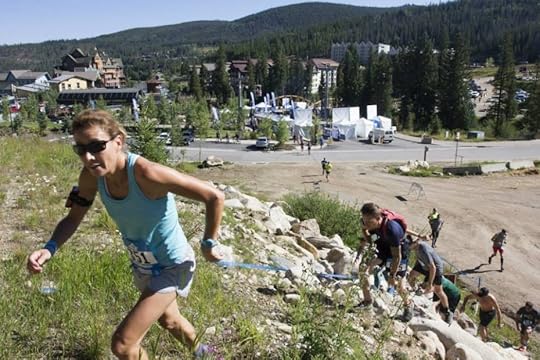
View Larger Image

View Larger Image

View Larger Image

View Larger Image

View Larger Image
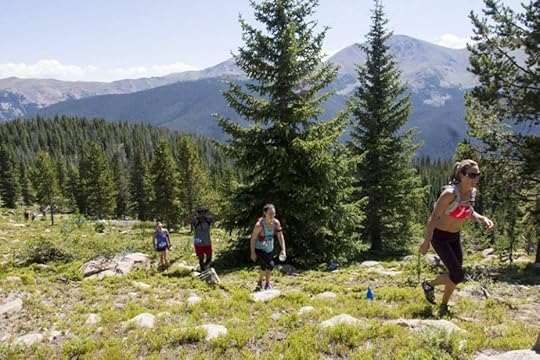
View Larger Image

View Larger Image
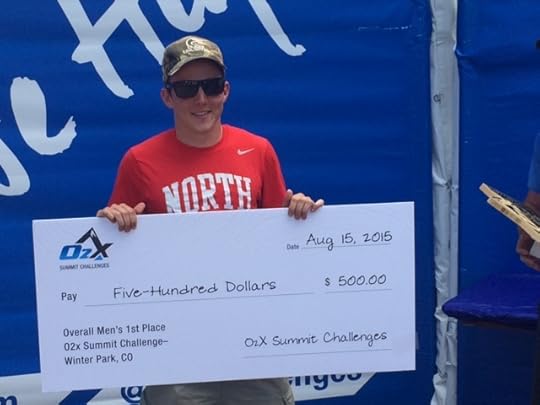
View Larger Image
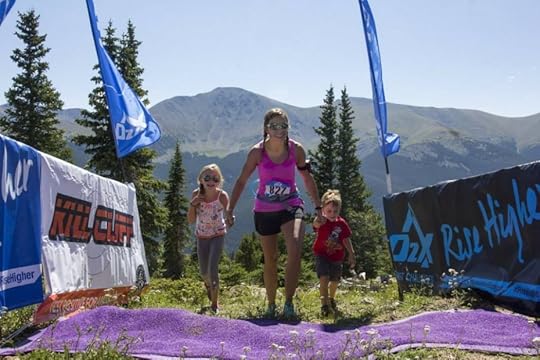
View Larger Image

View Larger Image
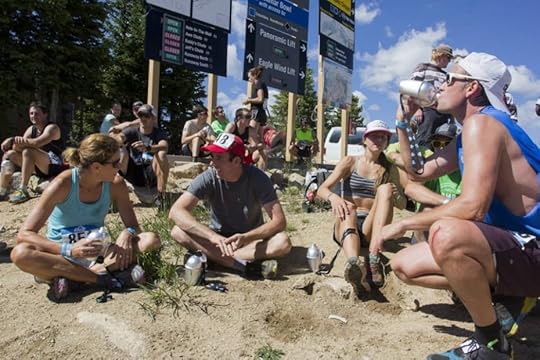
View Larger Image

View Larger Image
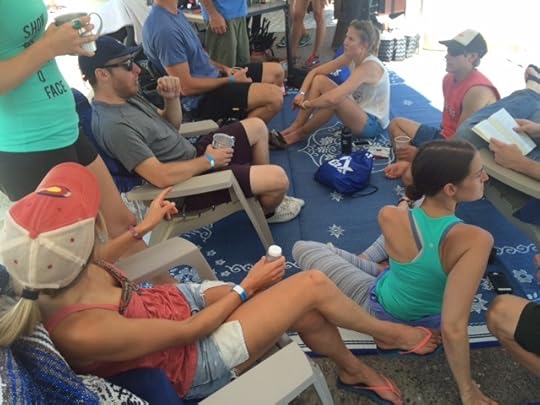
View Larger Image
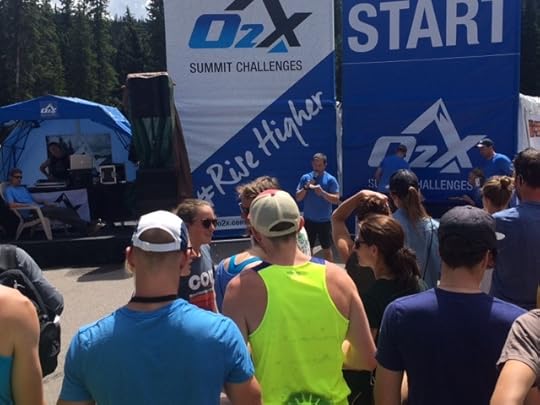
View Larger Image


More Galleries
The post Photos: O2X Summit Challenges in Colorado appeared first on Competitor.com.
The Grueling Fun of Off-Trail Mountain Racing
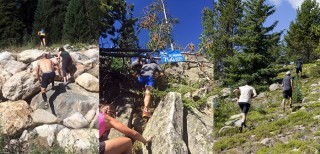
More than 160 competitors tackled a variety of natural obstacles in a 4-mile race up the ski slopes of Winter Park Resort on Aug. 15 in Colorado. Photos: Brian Metzler, Ellen Miller, Jake Hanson
By the time I reached the finish line of the O2X Summit Challenge in Winter Park, Colo., on Saturday, my hands were scratched up, my legs bloodied and my entire body was completely torqued from the outlandish “run” I had just endured.
The same was true for almost all of the 162 other competitors in this unique event who raced 4-ish miles from the base of Winter Park Resort to the lunch rock summit area of the Mary Jane side of the mountain resort. It was a relatively short race over rugged terrain—the winner finished the course in about an hour—but it was demanding, relentless and, well, a blast.
“It was so much fun, I really enjoyed it,” said Boulder’s Anna Rendstedt, 24, the women’s winner of the race. “I’m not really a regular trail runner, but I loved the technical parts, going over rocks quickly and jumping over logs. I don’t like to do repetitive or monotonous races, but this was a lot of fun.”
I couldn’t agree more. It was grueling fun traversing and ascending some of my favorite wintertime ski slopes. Yet while there are hundreds of great summer trail running races that wind up and down the trails and service roads of ski resorts around the U.S. and Canada, what makes the O2X Summit Challenges unique—and extremely challenging—is that they are run almost entirely over temporary off-trail courses.
Started last year in New England and expanded to include events in Vancouver and Winter Park this summer, the O2X races are designed to blend the multifaceted challenges of obstacle course racing and the endurance of traditional trail running.
“The goal was to take the phenomenon of obstacle racing and remove all of the cheesiness and the manmade stuff and combine it with the natural challenges of trail running and figure out a way to create a unique, diverse race with the mountain terrain that naturally exists,” says O2X co-founder Craig Coffey. “To design the course, we take what the mountain gives us.”
PHOTOS: O2X Summit Challenges in Colorado
The Winter Park race was very hard—partly because it involved moving fast up a mountain between roughly 9,000 and 11,230 feet above sea level—but mostly because it sent us scrambling over massive rocks, maneuvering over fallen tree trunks and branches and carefully negotiating steep side-angled slopes. It started with a short warm-up section on flat terrain and then sent competitors about a half mile up a steep dirt road, but after that it was through the woods and over logs, rocks, roots and bramble the rest of the way.
Finishing the race—whether near the front or near the back—required a unique mix of strength, endurance and agility, not to mention mental composure, patience and ingenuity. (In addition to similarities to obstacle racing and trail running, O2X events also incorporate attributes of traditional short-distance trail running, ultrarunning, adventure racing, rock climbing, bouldering and CrossFit.)
It was an unrelenting 60 to 90 minutes for a wide variety of competitors—trail runners, cyclists, mountain bikers, CrossFitters and hikers—but it was the unconventional challenges that made it so alluring, at times, very frustrating, and unquestionably loads of fun.
“It was a little dicey out there going over some of the slippery logs, but, yeah, it was awesome,” said Ryan Lassen, 27, an ultrarunner from Boulder. “It’s so different to what I normally do, but it was really cool and I would definitely come back and do it again.”
Coffey admits the O2X team has had to work diligently with both its resort partners and the U.S. Forest Service to get approval for the off-trail concept. (The event was held on U.S. Forest service land on which Winter Park Resort has permits for mountain biking, skiing, snowboarding and other types of uses.)
Coffey says nothing is altered on the mountain to design the course—no branches are sawed, no rocks are moved—however competitors do traipse over sections of dirt, plants, rocks, logs, tree stumps and various bits or organic matter as they follow a loosely designated course (marked by small blue flags.)
“We are keenly aware about taking care of the environment and making sure we don’t do any damage, and (the U.S. Forest Service) is not going to allow that either,” says Coffey, adding that all flagging and race-related debris is removed from the route within hours after the event.
Although O2X has expanded its reach across North America and has attracted Lululemon as a national sponsor, building a sense of community and working with reginoal vendors are key elements to developing the right vibe for each of its local events, says co-founder Adam LaReau.
The night before the Winter Park race, many of the competitors camped, mingled and partied near the event’s base camp. Under glowing skies, about 50 racers participated in group yoga sessions as a local DJ piped in music, while others chilled on comfortable chairs and mats while enjoying chili and soup from the Back Bowl Soup Co., drinking beer from Crazy Mountain Brewery and sampled spirits from 10th Mountain Whiskey. A fireside chat, featuring a short talk from U.S. Army veteran Brian Kitching about perseverance.
In the morning hours before the 9:30 a.m. start, racers mingled, enjoyed coffee and pastries, joined together in a group stretching session and stood silently together as the national anthem was played.
“We want to build community in these events,” LaReau says. “We don’t want to have an event where everyone signs up online, shows up, does the race and goes back to their vehicle and heads back home. That’s not what we’re about. We want to build a community of people who want to push their comfort zone together and enjoy every aspect of it together, before, during and after the event.”
The final O2X Summit Challenges event of 2015 will be held Oct. 3 at Loon Mountain in Lincoln, N.H.
The post The Grueling Fun of Off-Trail Mountain Racing appeared first on Competitor.com.
August 16, 2015
Shoe Talk: Hoka One One Speedgoat
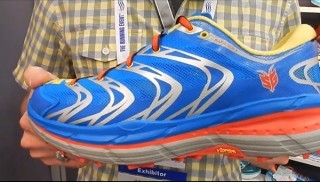
Hoka One One’s newest trail shoe received heavy input from ultrarunning star Karl Meltzer. In this video, we take a look at all the features of the lightweight shoe.
RELATED: Shoe Talk: Under Armour Fat Tire
The post Shoe Talk: Hoka One One Speedgoat appeared first on Competitor.com.
Falmouth Road Race Highlighted By Thrilling Finish
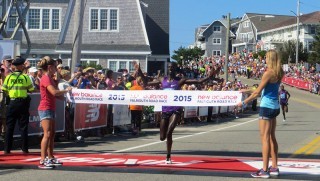
Photo: Chris Lotsbom/Race Results Weekly
(c) 2015 Race Results Weekly, all rights reserved. Used with permission.
FALMOUTH, Mass. USA — A dramatic series of events played out here at the 43rd New Balance Falmouth Road Race, leading to a finish that will be talked about for years.
In a nail-biting sprint to the line, Stephen Sambu retained his title in the 7-mile (11.3 km) race over a pack of three, crossing the finish in 32:17. Minutes earlier, Diane Nukuri of Burundi had won the women’s race going away in 36:47, a solo effort for nearly four miles.
Waiting steps from the finish line, Nukuri watched as the event’s new Countdown Clock ticked down to three seconds when Sambu broke the tape. Since it hadn’t hit zero, the Kenyan earned the inaugural Countdown gender challenge title and its $5,000 bonus. On a picture-perfect day, race organizers could not have asked for a better finish.
After roughly a 10-minute delay due to a medical emergency along the course, the elite women took off from Woods Hole bound for Falmouth Heights. Within the first 30 seconds, Nukuri was out front pressing the pace. After being out-kicked for first at the TD Beach to Beacon 10K two weeks ago, Nukuri didn’t leave anything to chance here, taking with her Americans Amy Cragg and Sara Hall, as well as Ethiopian Sentayehu Ejigu.
By the mile mark adjacent to Nobska Light, an iconic lighthouse, the quartet were roughly 30 meters up on the rest of the field, a margin that would increase to 24 seconds by two miles (10:25). In her own zone, Nukuri looked like a metronome in front: head bobbing ever so slightly, looking a bit like Paula Radcliffe in her prime. Her arms churned methodically; her eyes were focused on the ground ahead.
“I just kept pushing, pushing. It was hard, it was hot,” said Nukuri, who lives in Flagstaff, Ariz. “After one mile, the second mile, I felt really good and under control but it was in the shade so it was much easier. Once we got in the open and I was all by myself, I was just like ‘I just need to keep pushing, pushing.’ I needed to use my marathon strength.”
Cragg was the first to fade just shy of two miles. Without having injected too much of a surge, Nukuri found herself out front by two steps at 5K in 16:08. In the subsequent four minutes, she’d build a 30-meter lead on Ejigu and Hall.
Despite very oppressive heat and humidity, Nukuri pressed on knowing that if she let off the gas even in the slightest, Hall would come back and catch her. The pair had trained a bit in Flagstaff, and knew each other’s fitness well.
“I was believing I could catch her. The crowd was great saying ‘You can get her!’ the whole way,” said Hall, who is in the middle of marathon training. “But I knew she was going to be tough… I knew with that time bonus that she was going to go for it.”
At points during the race, Nukuri looked like she may be hurting under the hot sun. She’d look back frequently and grimace every so often. But drawing energy from the thousands of spectators, she snapped back into form and passed the six mile mark with a very comfortable lead on Hall.
Raising her arms in jubilation, Nukuri broke the tape in 36:47, followed by Hall 23 seconds later in 37:10. Ejigu rounded out the top three in 37:26, with Neely Spence Gracey fourth (37:32) and Cragg fifth (37:53).
Nukuri was very pleased to win this race in her fifth try, as she had previously finished second twice (2011, 2013), fourth once (2014), and a dismal 20th in 2008. She is planning to do a fall marathon, though would not reveal which one.
“It’s really nice. This is one of the best races. You can’t find anything better than this,” she said. “It feels amazing, I’m so excited and can’t wait to come back.”
Before celebrating too much, Nukuri turned around to look back towards the race course. At Friday’s press conference, she told Race Results Weekly she’d do a little dance if she was to win. In the moment, though, her plans changed, well aware that the men’s race was rapidly developing. There would be no early celebration before the Countdown Clock hit zero.
As soon as Nukuri crossed the finish line, a countdown clock began ticking down from 5 minutes and 32 seconds. If the top male came across the finish line before the clock reached zero, he would take home a $5,000 bonus. If it hit zero, the bonus would go to Nukuri. (The clock started at 5:32 because the elite women began ten minutes before the elite men and masses, thus they already have a ten minute advantage. Subtract the average time gap of 4:28 [the advantage organizers gave to women based on past results] and you have a 5:32 margin with which to work with.)
While Nukuri was recuperating at the finish, the men’s race was playing out as a battle for the ages. By the five mile mark, a group of six had been established: reigning winner Sambu, two-time champion Micah Kogo, United Airlines NYC Half victor Leonard Korir, newly minted American citizen Sam Chelanga, Uganda’s Moses Kipsiro, and B.A.A. 10K champ Daniel Salel ran together. American Abdi Abdirahman was with the group, though he pulled out with a muscle cramp minutes earlier.
Familiar with the course’s undulating terrain, Sambu had hoped to make a commanding move at 5K. But the heat and strength of his competitors made him reconsider. Sambu also was dealing with a debilitating headache from the 80-degree temperatures, possibly a sign of heat exhaustion.
All along the water’s edge, Sambu led step-for-step. While a bit frustrated that his colleagues would not help push the pace, Sambu remained calm and focused on the task at hand.
“I knew everyone was still there and in better shape than last year,” he said. “I knew it was going to be a sprint finish… I knew going to the finish line I was going to go hard a little bit then go down[hill].”
The race would shake up after the six mile mark, passing a gorgeous marina: Salel and Kipsiro were dropped, leaving four to battle for the $8,000 first-place prize, and perhaps the Countdown bonus.
Again using knowledge of the course to his advantage, Sambu injected a surge leading up the final hill with about 400 meters to go. Kogo, Korir, and Chelanga held on for dear life, though couldn’t quite match Sambu’s speed. The University of Arizona alum surged again after cresting the incline, proceeded to sprint downhill under an American flag and through the finish line.
Sambu was so concerned about his competitors that he didn’t bother to look up at the ‘Countdown’ clock next to the finish line. Breaking the tape in 32:17, he finished with three seconds left on the clock, giving him the $5,000 bonus.
“I didn’t know I won until they told me five minutes after. I knew it was going to be tough,” Sambu told the media. After finishing he proceeded to go straight to the medical tent, overcome by the suffocating heat and humidity. “I just came down hard [the final stretch].”
Witnessing how hard Sambu worked in the final meters, Nukuri applauded his efforts and courage in taking home the gender bonus.
“He earned it,” she said. “I just saw him crossing the line, when he came downhill they were flying. I was barely moving it was so hot… They had so many people pushing each other.”
By retaining his title, Sambu now joins an illustrious list of back-to-back men’s winners that includes Frank Shorter, Bill Rodgers, Alberto Salazar, Khalid Khannouchi, and Gilbert Okari, among others. Sambu said being mentioned among that list was extremely meaningful.
“To me, really, it’s very important. It means a lot to me to win twice in a row. Really I am so happy. I know it is not easy, but I am so happy.”
Kogo, second in 32:19, called the race a pure battle. He was followed across the line by Korir (32:20), Chelanga (32:21), Kipsiro (32:30), and Salel (32:51). It was a blur of purple at the finish, as all of the East Africans and Chelanga were wearing a shade of the color.
Feeling the burn in the last mile, Chelanga pushed on with extra motivation knowing today was his first race as an American citizen. On Friday, he took his oath in Tucson, Ariz.
“I felt like I represented America very well, the way I would want someone to fight. I just didn’t have a good kick,” he said. “I tried my best. I’m really happy I’m an American now. This week has been really emotional for me… Overall I think it’s a celebration and I couldn’t be any happier.”
Among the other notable American finishers were Aaron Braun (seventh, 33:15), Chris Derrick (eighth, 33:41), and Meb Keflezighi (tenth, 34:01). Keflezighi suffered a slight hamstring injury a few weeks ago, and ran as a tempo effort to finish as the top masters (40+) athlete. Nike Bowerman Track Club athlete Derrick just had an off day, he said.
“Falmouth was great up until about the third mile,” he said with a laugh. “The whole experience all the way through the weekend was awesome, my host family was great. The early pace felt fine but I just never felt quite comfortable.”
Between the memorable battles for the individual wins, and the nail-biting Countdown finish, the day was a grand success according to Scott Ghelfi, President of the Board of Directors of the New Balance Falmouth Road Race.
“How exciting. [The Countdown] added a whole new element to the race,” he told Race Results Weekly. “I don’t think it could have worked out better than it did. Seeing Diane’s emotion on her face at the finish, extremely happy then disappointment to watch Stephen win, but still happy for her good friend. It was just great.”
When asked whether the race would hold a ‘Countdown’ again next year, Ghelfi hopes so.
“I’m not the one with the final say, but I would say absolutely!” he said.
The post Falmouth Road Race Highlighted By Thrilling Finish appeared first on Competitor.com.
Ryan Hall's Blog
- Ryan Hall's profile
- 21 followers



